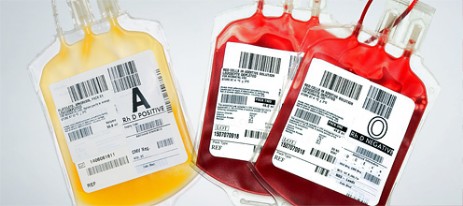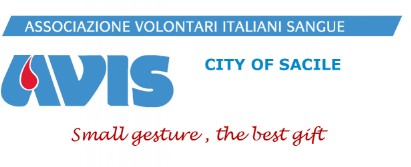Types Of Donations
Donation
Some types of donations: whole blood – plasma (plasmapheresis) – platelets (plateletpheresis) – multiple donation of blood components.
Whole blood donation
The whole blood sample is absolutely harmless for the donor and it has a duration of about 5-8 minutes.
The maximum volume of blood collected, establismed by law, is equal to 450 cubic centimeters +/- the 10%
Plasmapheresis (plasma donation)
In the apheresis (greek word meaning the act of “take out”), through the use of cell separators, you obtain from the donor’s blood only the blood component that you have need:
Plasma (plasmapheresis) or platelets (plateletpheresis), restorning the remaining items at once.
Only a part of the annual requirement of albumin and factor the remaining items at once VIII and other plasma derivatives is produced in Italy; the remainder part has to be imported resulting in a considerable expence and a higher potential risk of communicable diseases.
How can you donate plasma
The plasmapheresis is performed with devices that take the blood and separate the components, returning the cells to the donor in a continuous process, through a single venous access. This kind of donation has a variable duration from 35 minutes to about 50 minutes, it is carried out preferably by appointment and since specific equipment is required (cell separator) you may perform it by transfusion centers enable.
The requirements for plasma donation are similar to those for whole blood donation. The interval between a donation and the other, for only plasma, can be as little as 14 days because the plasma regenerates very quickly without any consequences or negative impact.
What is plasma
The plasma is the liquid component of blood, thanks to which the blood cells can circulate. The plasma is mainly made up of water (more than 90%) in which are dissolved and conveyed many substances like proteins, sugars, grassi, minerals, hormones, vitamins, antibodies and clotting factors.
Some of the substances obtained from plasma and their main function.
- Albumin: it carries various components of the blood and nutrient substances. It is a protein used in the treatment of certain diseases of the liver and kidneys (cirrhosis, nephrosis,etc.) For the treatment of serious pathological states such as shock from burns, trauma etc.
- Immunoglobulins: are protective substances or antibodies that develop normally in contact with different foreign body agents, or after vaccination. Their use in concentrated form protects people who do not have specific antibodies for a specific disease. They constitute a great help in the case of people whose resistance to infection is decreased or in some immunological disorders.
- Coagulation factor (VIII and IX): are basic for patients with hemophilia A and B which have a serious shortage in the blood of factor VIII or IX. In recent years the use of these highly purified preparations and very effective has allowed an almost normal life for those suffering from hemophilia.
Plateletpheresis: donation of platelets
The plateletpheresis consist in the removal of only platelets. In addition to the requirements necessary for whole blood donation, the donor of platelets has to have a normal position haemocoagulative.
It can be performed with centrifugation method using a number of cycles during which the equipment used separates the corpuscular part of blood from plasma; this last is collected in a satellite bag waiting to be returned to the donor. By corpuscular part it is automatically extracted in a closed circuit, without the possibility of contamination, platelets that are collected into a special bag.
The cycle ends with the re-infusion to the blood of plasma, of the red blood cells and white blood cells.
At this point starts the new cycle, until the desired proportion of platelets. You can’t run normally more than six plateletpheresis in the years. The minimum time allowed between two plateletpheresis and between a plateletpheresis and a donation of whole blood is 14 days, instead the time between a donation of whole blood and a plateletpheresis is one month. The whole process takes about an hour and a half.
Platelets collected will be used within 5 days of collection for some serious illnesses such as leukemia, for cancer patients receiving chemotherapy and as a fundamental support for bone marrow transplants.
Multiple donation of blood components
Thanks to the use of cell separators today it is possible to make multiple donations of blood components such as an eritroplasmaferesi (donation of plasma and red cell bloods), and a eritropiastrinoferesi (donation of red cell bloods and platelets), a donation of platelets collected in 2 bags, plasmapiastrinoaferesi (donation of plasma and platelets).
Autotransfusion
The autotransfusion is a transfusion procedure that consist of units transfused to the subject of his own blood and is accomplished by one of the following ways:
- predeposit
- recovery perioperative
- normovolemic hemodilution
The most used method is the predeposit, a transfusion technique in which the blood is taken from the donor who will also be the receiver, to compensate the blood loss that may occur in the course of scheduled surgery. Some days before the intervention, units of blood are taken from the patient, in successive stages, up to the amount expected to be needed, so as to allow the possible use during the surgical intervention and/or subsequently to the same. The blood collected is stored according to the traditional methods, and then transfused, in case of need.
The main advantages of the autotransfusion are:
- elimination of incompatibility reactions
- elimination of the risk of transmission of infectious diseases
- reduction in the risk of immunization of different antigens, with possible events at a distance
- blood saving
The patient should be informed that the predeposited units are stored until time expires red cell component and that are available only for his transfusion needs.
The expiration of the predeposit units, the related preservation and transportation methods are similar to those for homologous blood units.



